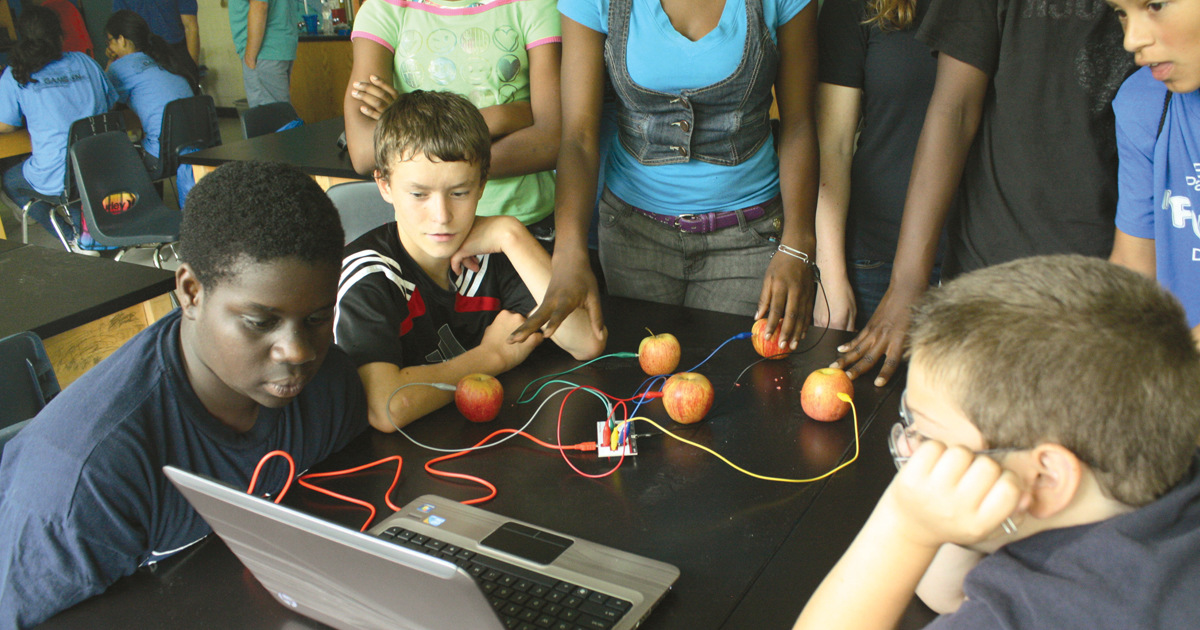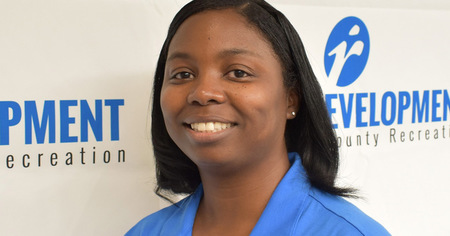The complexity of today's work, especially in STEM fields, often requires the collaboration of a large and diverse team of people—all with different specialties and talents.
Technology has made it easier and easier for teams to collaborate, even when individual team members are geographically remote. More important, recent research has shown that the inability to work as part of a team and get along with co-workers is one of the main reasons people are fired from their jobs today. Even before the job field, most university graduate and undergraduate courses will require some kind of teamwork from their students.
Developing teamwork skills is important, but most curriculum today doesn't provide enough emphasis in these skills. Helping young people develop teamwork skills requires careful planning and integration into the curriculum.
It's not easy!
Grouping desks together, but having young people answer questions individually, does not develop teamwork skills. Grouping students together and having one or two people in the team do all the work does not develop teamwork skills. Having students work in teams so the teacher can relax and have a break does not develop good teamwork.
To fully prepare our young people for their working lives, well-structured and supervised team activities should be a regular part of every young person's education—and the afterschool environment could provide the perfect type of informal atmosphere where team projects can prosper with low stress for the student.
When thinking of team projects, STEM could provide the ideal setting. From engineering challenges to group investigations, many hands-on STEM investigations are ready-made to be adapted team activities. With just a little planning, team STEM projects could develop the essential skills that will help prepare young people for the diversities and realities of the modern working environment.
Advantages of Team/Group Work
When involved in well-structured team activities, young people develop and practice skills in:
- Decision making
- Problem solving
- Personal values
- Clarification
- Communication
- Collaboration
- Cooperation
- Critical thinking
- Negotiation
- Conflict resolution
- Teamwork
When in work teams, young people are encouraged to become active, rather than passive, learners. With each young person in charge of his or her own success, the opportunity exists for self-esteem building and self-learning satisfaction. The opportunity to learn from—and teach—others provides context and facilitates deeper learning. Team activities help young people develop socially and emotionally, with challenges that mirror the realities and diversity of the workplace.
How to Successfully Implement Team STEM Activities
Successful team activities are set up with the following criteria:
- Establish common goals and set clear criteria for success.
- Create diverse grouping where all participants have a voice.
- Determine measures for accountability.
- Give constructive feedback and actively assess the team's progress.
Team activities are effective when they are set up with clear guidelines and well-defined goals. They should provide opportunities for youth to work together and accomplish a specific task—and there should be active roles for everyone. Interactions and "doing" should be a team activity's primary focus, and this is why STEM could provide the perfect environment.
Decide how you will you divide young people into teams. Devise a method that is fair, while ensuring each team is diverse and balanced. Whatever method you choose, take note to influence the assignment of team members to manage any bullying and negative peer influences.
Plan out how each activity will be structured. Will each young person be given a specific role? (For example: coordinator, scribe, researcher, presenter, engineer.) Or will teams assign roles for themselves? How much time will the group have for each part of the project? How will the results be presented? Where can young people go for more information? Can teams ask questions of other teams?
Foster an atmosphere of equal collaboration. To encourage collaboration, collectively create a framework of guidelines young people can agree on that are important to a successful team. Discuss what attributes help define a good team player. The goal is to build a team where learning and learners are interdependent on one another.
A consensus from a group of young people on what constitutes a good team member might be as follows:
- Takes responsibility for oneself.
- Compromises.
- Helps the team.
- Respects others.
- Makes and follows agreements.
- Organizes work.
- Listens to others.
- Recognizes everyone's special talents.
- Develops ideas and creates products with involvement of all team members; tasks done separately are brought to the team for critique and revision.
- Promotes discussions by clearly expressing ideas and asking probing questions.
- Ensures everyone is heard.
- Responds thoughtfully to new information and perspective.
- Gives useful feedback.
- Attempts to resolve issues without asking the teacher for help.
- Follows rules for discussions, decision-making and conflict resolution.
To ensure teams are productive after agreeing on the criteria for a good team member, role model with young people some scenarios that might occur in a team and how they can be successfully resolved. You could also help young people develop the skills they will need to succeed in team activities by playing some team-building games beforehand.
To get started with team skill building, think of STEM activities you currently teach. How could you structure them so they can be done as a team project? It's easier to use a project you are familiar with, when adding an additional layer of pedagogy.
Below is a list of some team STEM activities I've had success with.
- Building bridges out of craft supplies
- Wildlife/nature surveys
- Egg drop protection packaging
- Solar system share (every team researches and presents a planet)
- Marble roller coasters
- Paper airplane distance challenge
- Popsicle stick catapults
Written by Andy the Science Wiz, NAA STEM Specialist, Andy Allan.




